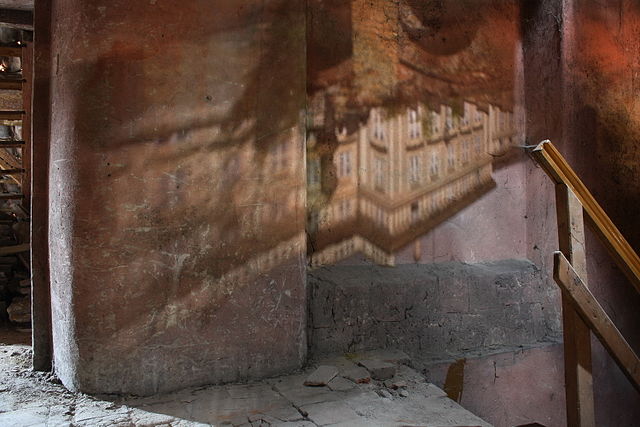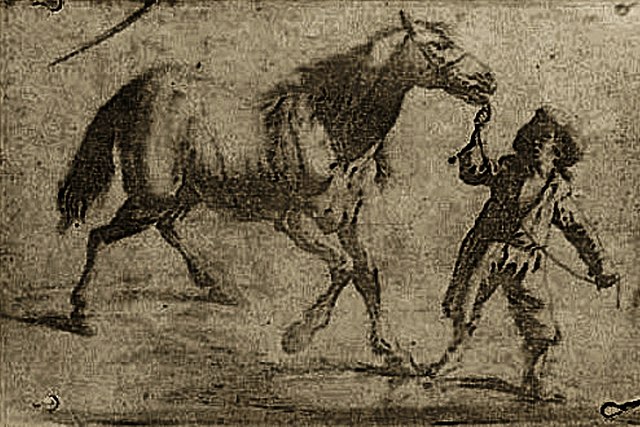View from the Window at Le Gras
View from the Window at Le Gras is a heliographic image and the oldest surviving camera photograph. It was created by French inventor Nicéphore Niépce sometime between 1822 and 1827 in Saint-Loup-de-Varennes, France, and shows parts of the buildings and surrounding countryside of his estate, Le Gras, as seen from a high window.
Demonstration of camera obscura. The original image gets rotated and reversed through a small hole onto an opposite surface.
Gernsheim's enhanced version
The original plate on display at the Harry Ransom Center in Austin, Texas, in 2004
Heliography from helios , meaning "sun", and graphein (γράφειν), "writing") is the photographic process invented, and named thus, by Joseph Nicéphore Niépce around 1822, which he used to make the earliest known surviving photograph from nature, View from the Window at Le Gras, and the first realisation of photoresist as means to reproduce artworks through inventions of photolithography and photogravure.
This earliest known surviving heliographic engraving, printed from a metal plate made in 1825 by Joseph Nicéphore Niépce using his "heliographic process". The plate was exposed under an ordinary engraving. Heliography was also used to capture a scene directly from nature with a camera.
Comparison between the original engraving and the heliography of Joseph Nicephore Niépce. Left: Engraving of Portrait of Georges d'Amboise, 1650 right: Heliography (Heliogravure) of the engraving, 1826
View from the Window at Le Gras, by Joseph Nicephore Niepce, 1826 or 1827, France - Harry Ransom Center - University of Texas at Austin






